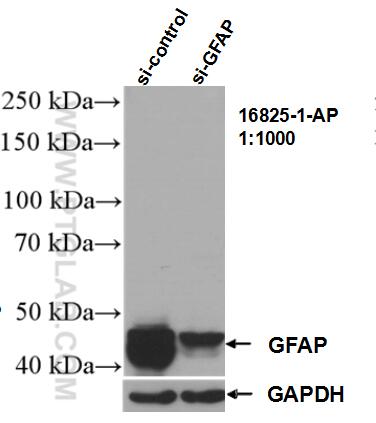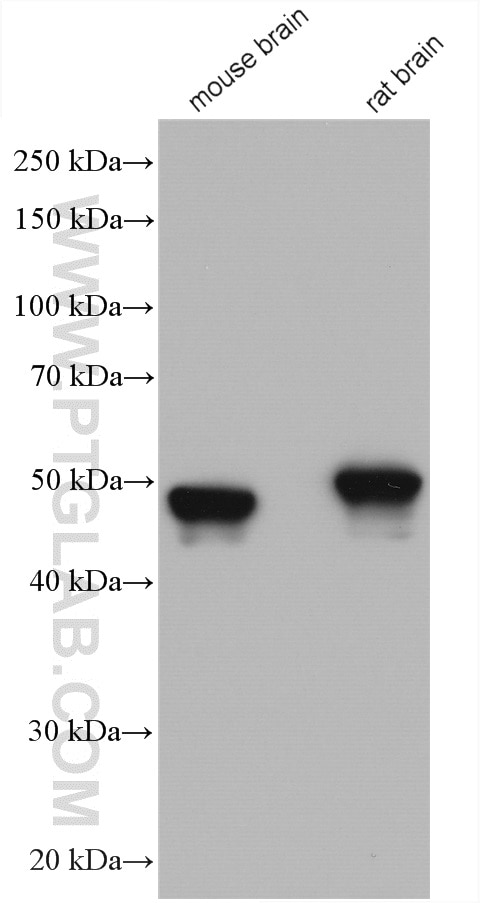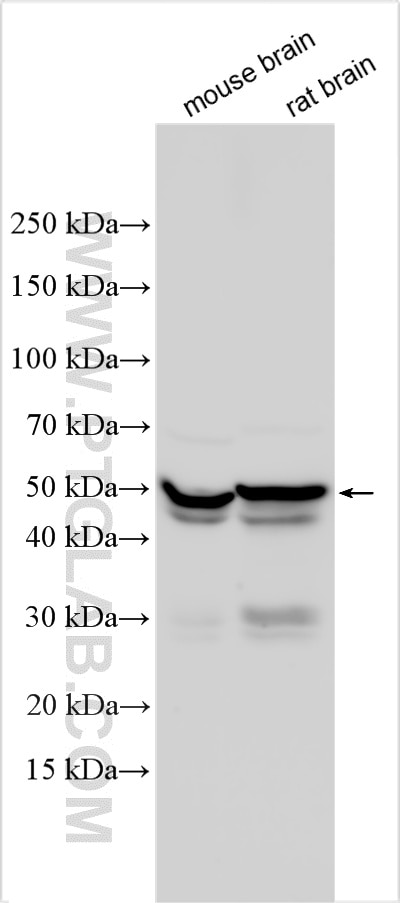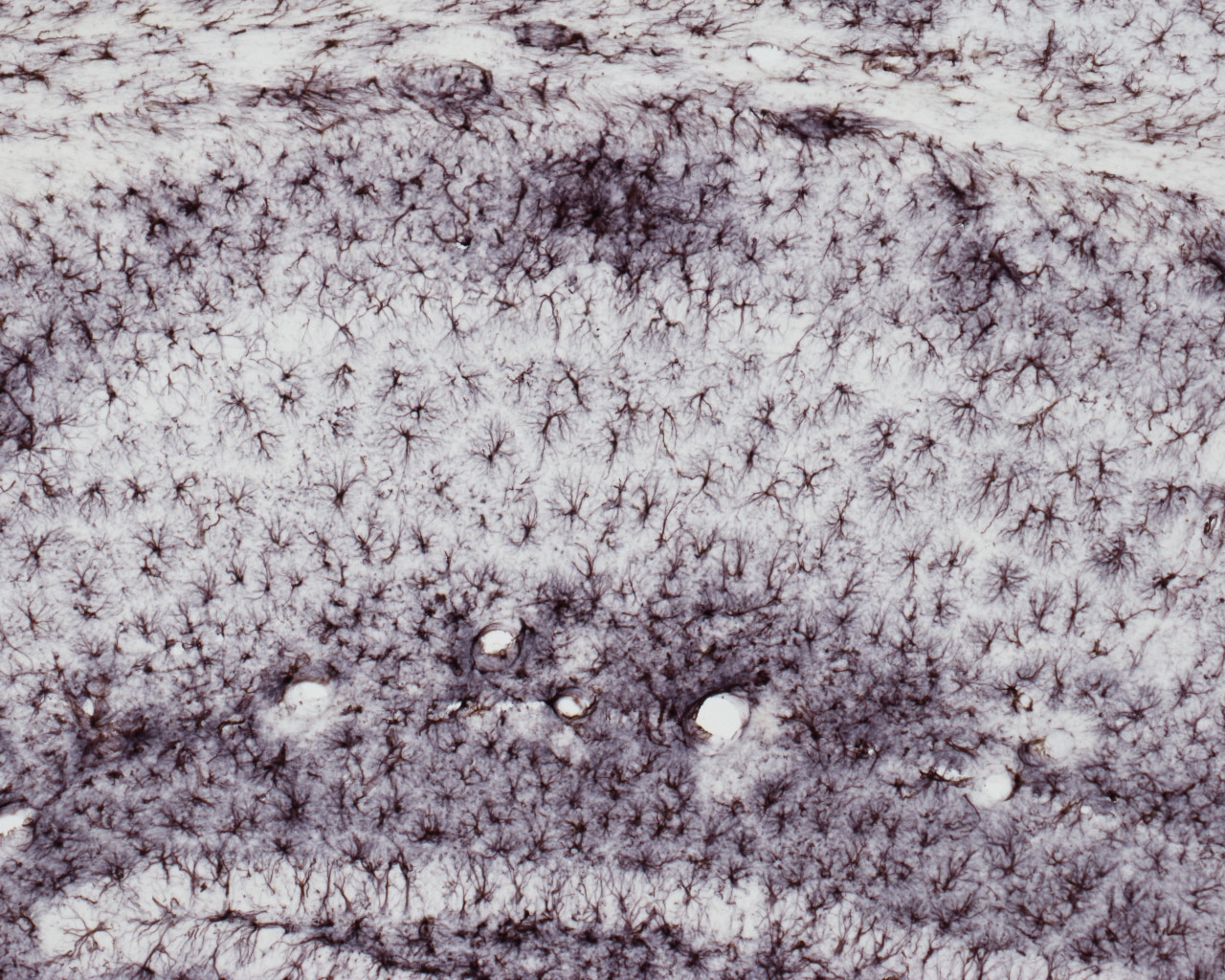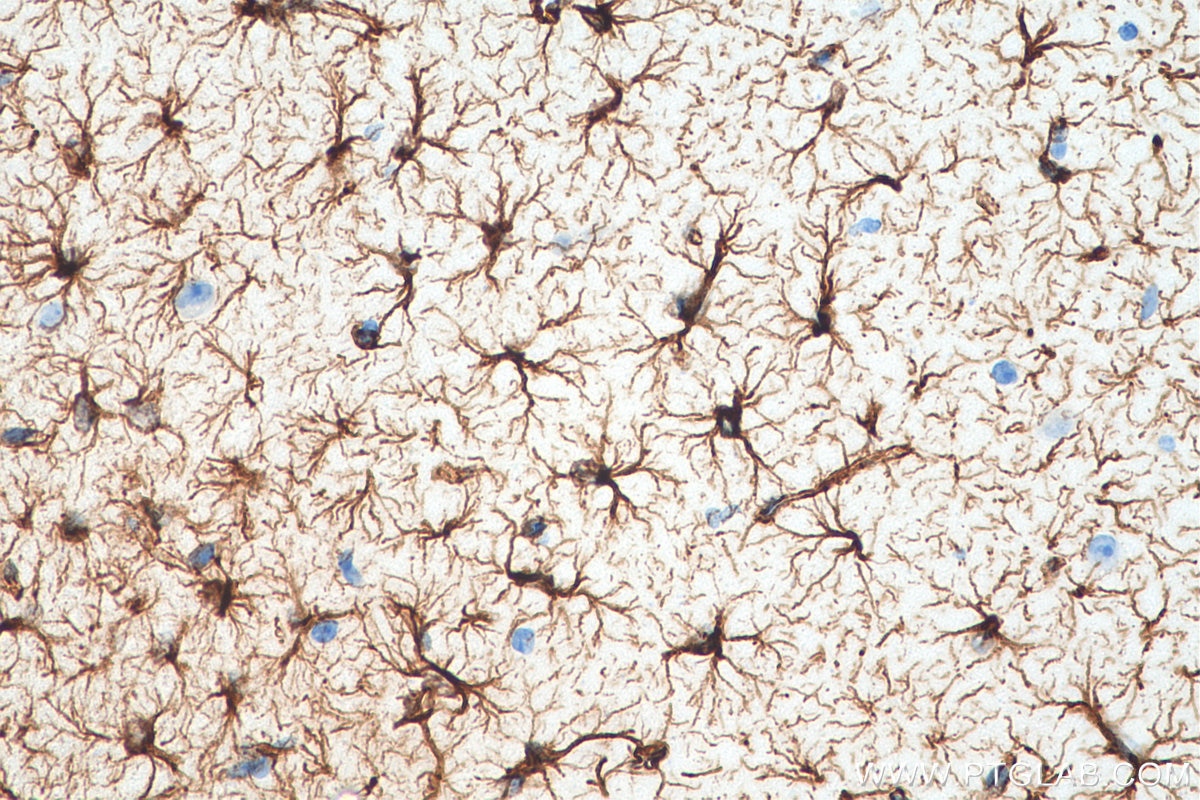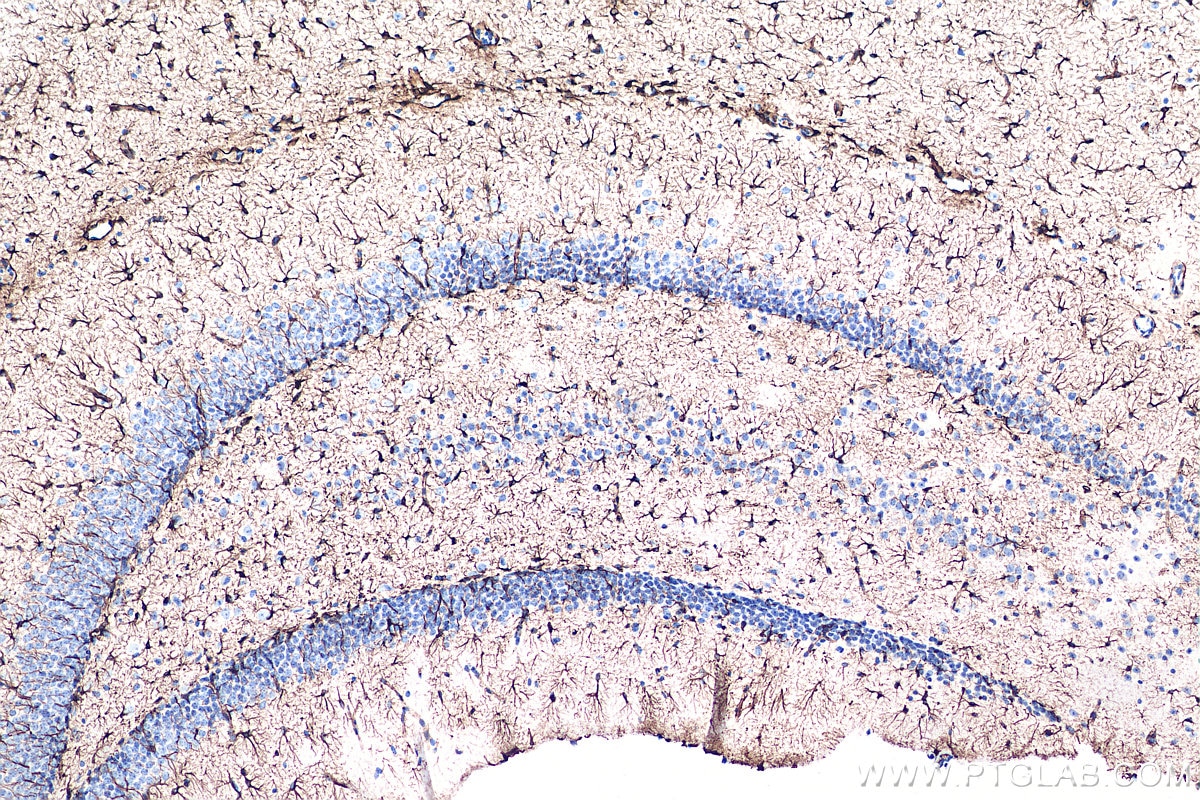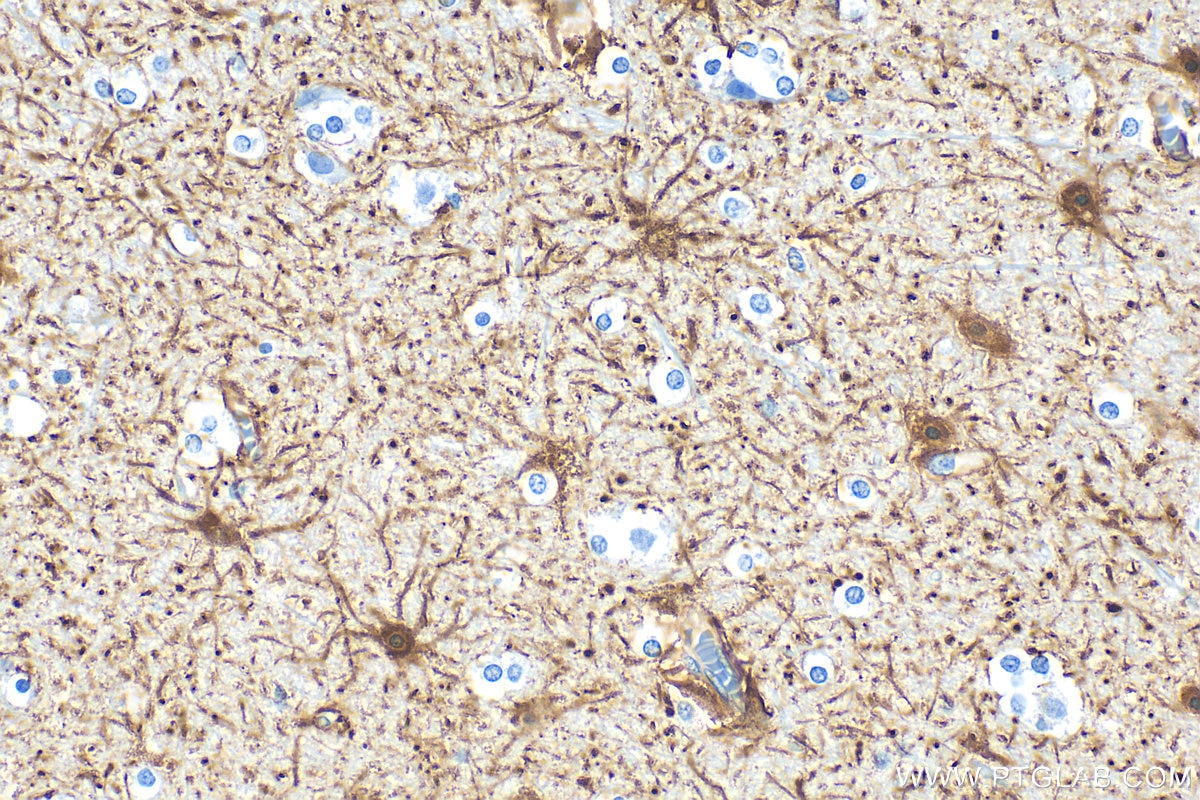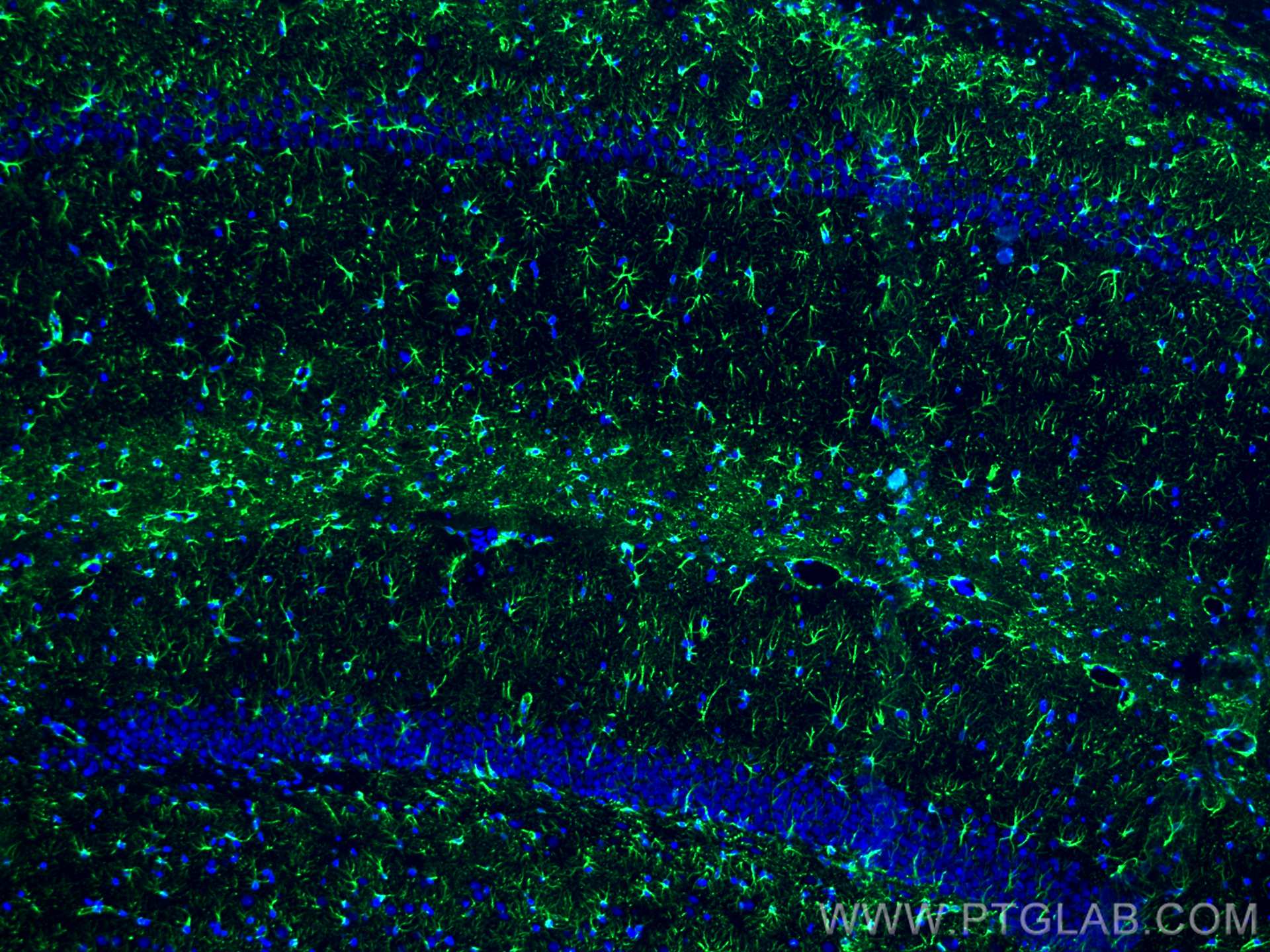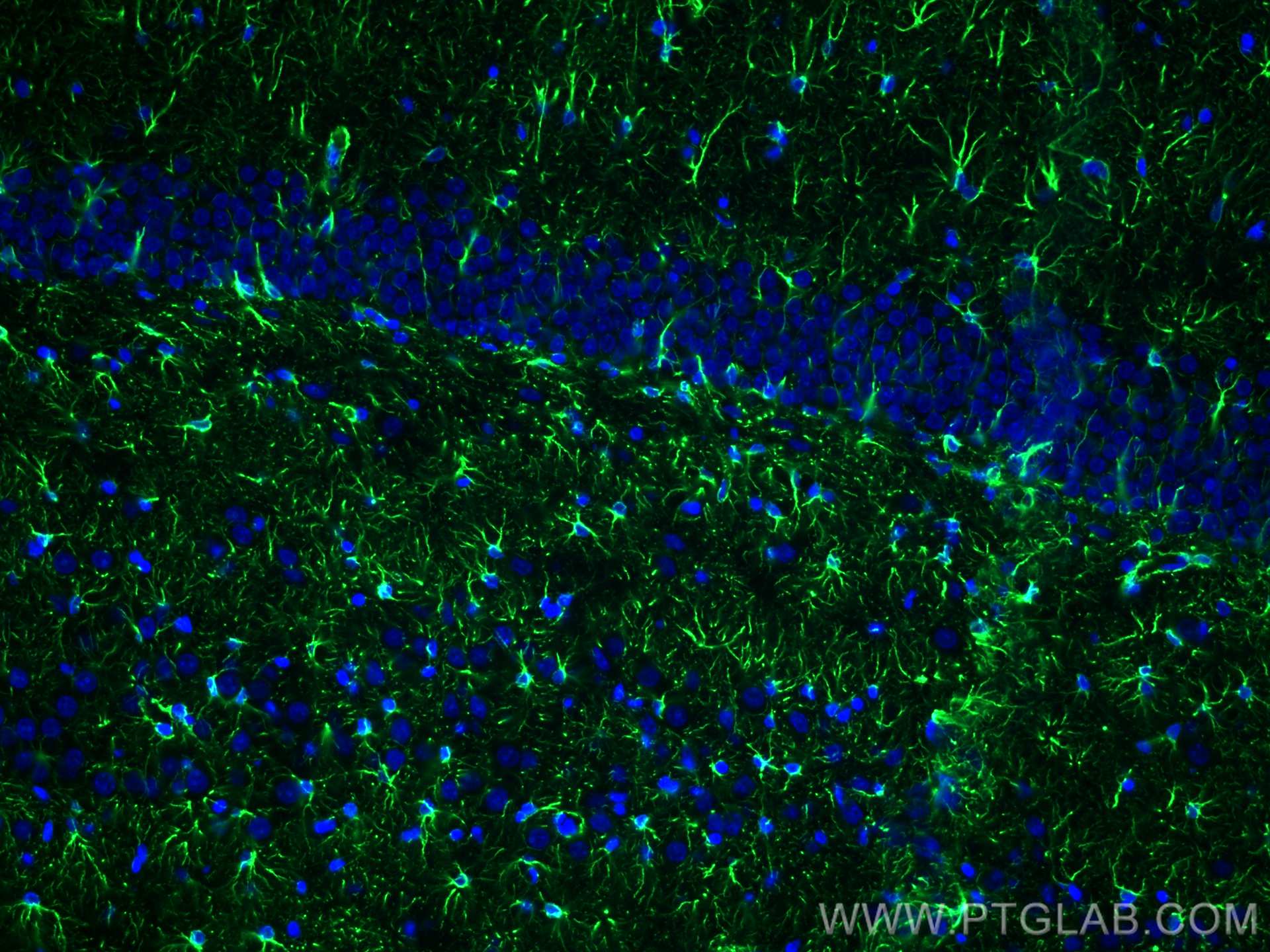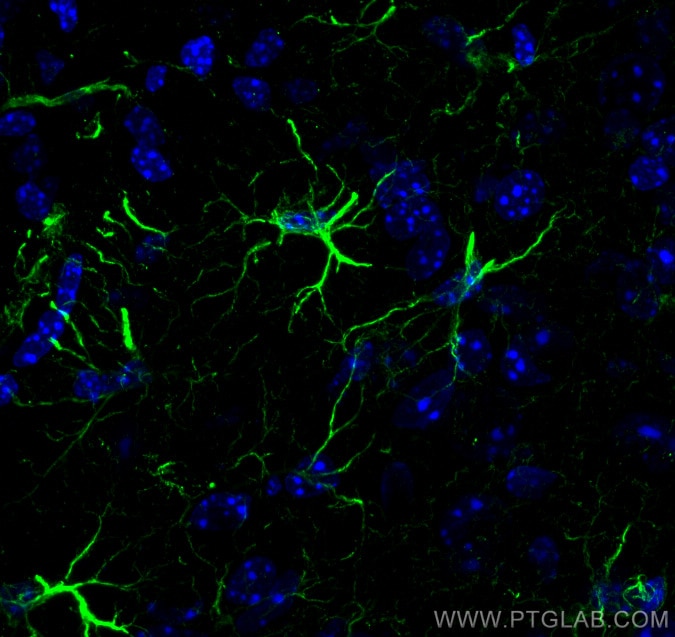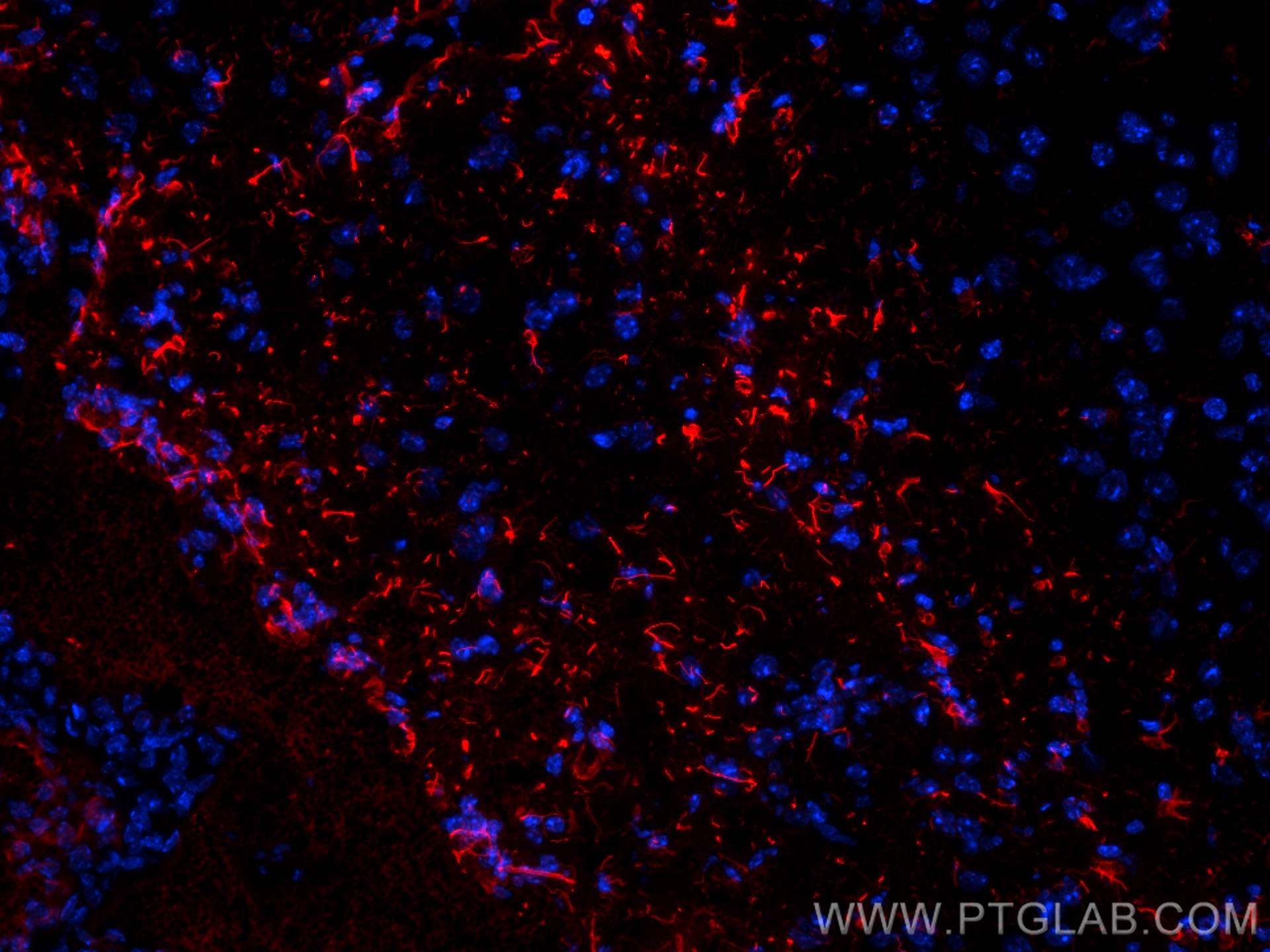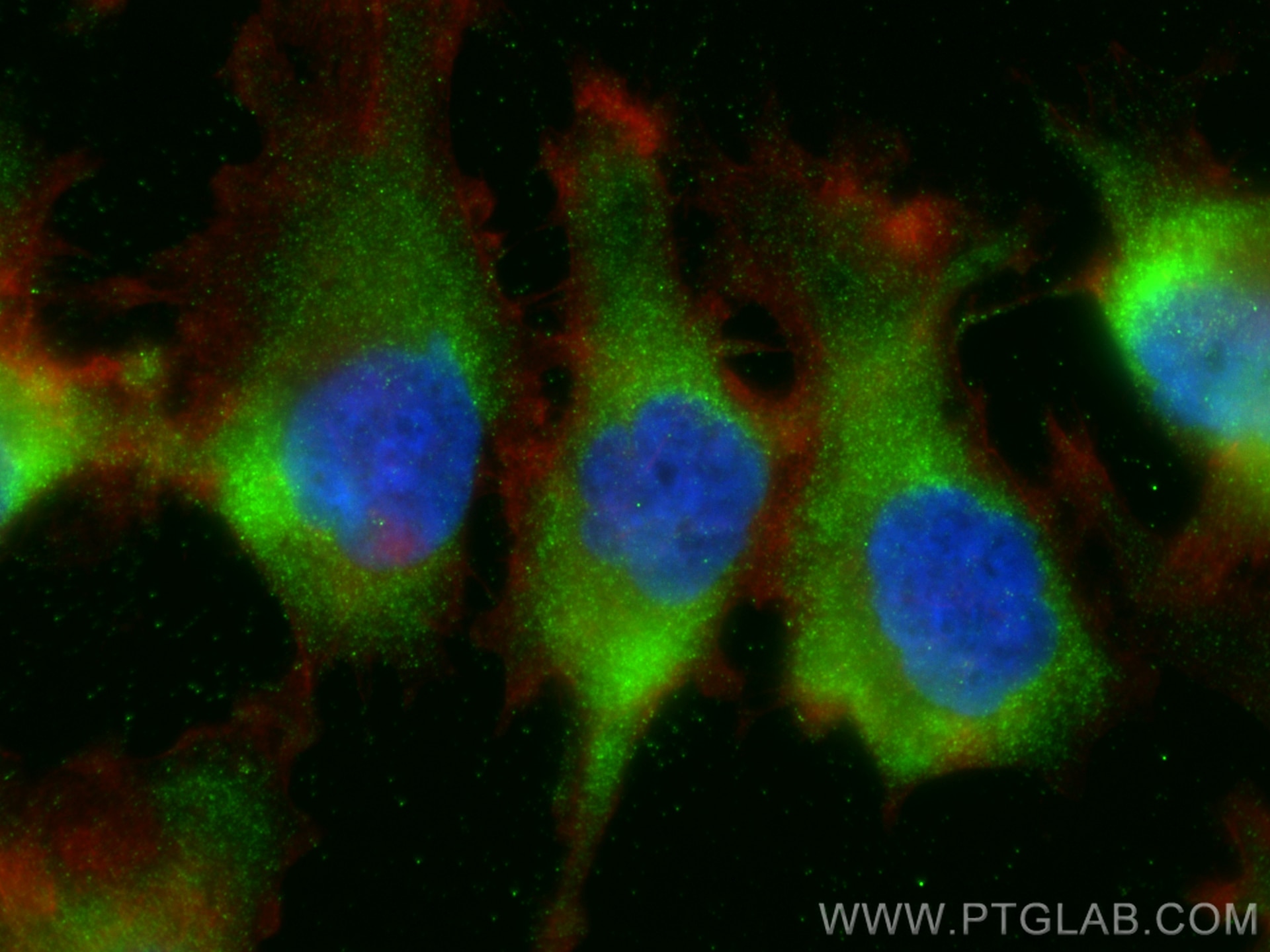- Featured Product
- KD/KO Validated
GFAP Polyklonaler Antikörper
GFAP Polyklonal Antikörper für WB, IHC, IF/ICC, IF-P, IF-Fro, ELISA
Wirt / Isotyp
Kaninchen / IgG
Getestete Reaktivität
human, Maus, Ratte und mehr (7)
Anwendung
WB, IHC, IF/ICC, IF-P, IF-Fro, ELISA
Konjugation
Unkonjugiert
Kat-Nr. : 16825-1-AP
Synonyme
Geprüfte Anwendungen
| Erfolgreiche Detektion in WB | Maushirngewebe, Rattenhirngewebe, U-251-Zellen |
| Erfolgreiche Detektion in IHC | Maushirngewebe, humanes Hirngewebe Hinweis: Antigendemaskierung mit TE-Puffer pH 9,0 empfohlen. (*) Wahlweise kann die Antigendemaskierung auch mit Citratpuffer pH 6,0 erfolgen. |
| Erfolgreiche Detektion in IF-P | Rattenhirngewebe, Maushirngewebe |
| Erfolgreiche Detektion in IF-Fro | Maushirngewebe |
| Erfolgreiche Detektion in IF/ICC | A172 cells |
Empfohlene Verdünnung
| Anwendung | Verdünnung |
|---|---|
| Western Blot (WB) | WB : 1:20000-1:100000 |
| Immunhistochemie (IHC) | IHC : 1:2500-1:10000 |
| Immunfluoreszenz (IF)-P | IF-P : 1:50-1:500 |
| Immunfluoreszenz (IF)-FRO | IF-FRO : 1:500-1:2000 |
| Immunfluoreszenz (IF)/ICC | IF/ICC : 1:50-1:500 |
| It is recommended that this reagent should be titrated in each testing system to obtain optimal results. | |
| Sample-dependent, check data in validation data gallery | |
Veröffentlichte Anwendungen
| WB | See 202 publications below |
| IHC | See 109 publications below |
| IF | See 463 publications below |
Produktinformation
16825-1-AP bindet in WB, IHC, IF/ICC, IF-P, IF-Fro, ELISA GFAP und zeigt Reaktivität mit human, Maus, Ratten
| Getestete Reaktivität | human, Maus, Ratte |
| In Publikationen genannte Reaktivität | human, Affe, Ente, hamster, Hausschwein, Kaninchen, Maus, Ratte, Zebrafisch, Ziege |
| Wirt / Isotyp | Kaninchen / IgG |
| Klonalität | Polyklonal |
| Typ | Antikörper |
| Immunogen | GFAP fusion protein Ag10423 |
| Vollständiger Name | glial fibrillary acidic protein |
| Berechnetes Molekulargewicht | 432 aa, 50 kDa |
| Beobachtetes Molekulargewicht | 45-50 kDa |
| GenBank-Zugangsnummer | BC013596 |
| Gene symbol | GFAP |
| Gene ID (NCBI) | 2670 |
| Konjugation | Unkonjugiert |
| Form | Liquid |
| Reinigungsmethode | Antigen-Affinitätsreinigung |
| Lagerungspuffer | PBS with 0.02% sodium azide and 50% glycerol |
| Lagerungsbedingungen | Bei -20°C lagern. Nach dem Versand ein Jahr lang stabil Aliquotieren ist bei -20oC Lagerung nicht notwendig. 20ul Größen enthalten 0,1% BSA. |
Hintergrundinformationen
Function
GFAP (Glial fibrillary acidic protein) is a type III intermediate filament (IF) protein specific to the central nervous system (CNS). GFAP is one of the main components of the intermediate filament network in astrocytes and has been proposed as playing a role in cell migration, cell motility, maintaining mechanical strength, and in mitosis.Tissue specificity
GFAP is expressed in central nervous system cells, predominantly in astrocytes. GFAP is commonly used as an astrocyte marker. However, GFAP is also present in peripheral glia and in non-CNS cells, including fibroblasts, chondrocytes, lymphocytes, and liver stellate cells (PMID: 21219963).Involvement in disease
- Mutations in GFAP lead to Alexander disease (OMIM: 203450), an autosomal dominant CNS disorder. The mutations present in affected individuals are thought to be gain-of-function.
- Upregulation of GFAP is a hallmark of reactive astrocytes, in which GFAP is present in hypertrophic cellular processes. Reactive astrogliosis is present in many neurological disorders, such as stroke, various neurodegenerative diseases (including Alzheimer's and Parkinson's disease), and neurotrauma.
Isoforms
Astrocytes express 10 different isoforms of GFAP that differ in the rod and tail domains (PMID: 25726916), which means that they differ in molecular size. Isoform expression varies during the development and across different subtypes of astrocytes. Not all isoforms are upregulated in reactive astrocytes.Post-translational modifications
Intermediate filament proteins are regulated by phosphorylation. Six phosphorylation sites have been identified in GFAP protein, at least some of which are reported to control filament assembly (PMID: 21219963).Cellular localization
GFAP localizes to intermediate filaments and stains well in astrocyte cellular processes.Protokolle
| PRODUKTSPEZIFISCHE PROTOKOLLE | |
|---|---|
| WB protocol for GFAP antibody 16825-1-AP | Protokoll herunterladen |
| IHC protocol for GFAP antibody 16825-1-AP | Protokoll herunterladenl |
| IF protocol for GFAP antibody 16825-1-AP | Protokoll herunterladen |
| STANDARD-PROTOKOLLE | |
|---|---|
| Klicken Sie hier, um unsere Standardprotokolle anzuzeigen |
Publikationen
| Species | Application | Title |
|---|---|---|
Cell Metab Acetate enables metabolic fitness and cognitive performance during sleep disruption | ||
Nat Metab Mitochondrial fission drives neuronal metabolic burden to promote stress susceptibility in male mice | ||
Nat Commun Bicarbonate signalling via G protein-coupled receptor regulates ischaemia-reperfusion injury | ||
Nat Commun Schwann cells regulate tumor cells and cancer-associated fibroblasts in the pancreatic ductal adenocarcinoma microenvironment |
Rezensionen
The reviews below have been submitted by verified Proteintech customers who received an incentive for providing their feedback.
FH Gabriele (Verified Customer) (09-01-2025) | It works very well for IF on hiPSC-derived cortical brain organoid sections (GFAP in yellow and nuclei in blue). The dilution can certainly be increased.
 |
FH Rashmi (Verified Customer) (09-25-2024) | used for western blot
|
FH Maria-Luisa (Verified Customer) (08-22-2024) | Antigen retrieval with citrate buffer prior to IF staining
|
FH Vikas (Verified Customer) (07-11-2024) | Used for IF, Worked very well, Highly recommended.
|
FH manohar (Verified Customer) (03-06-2024) |
|
FH Badrieh (Verified Customer) (08-02-2022) | this Antibody worked really great with different Recombinant GFAP proteins in ELISA.
|
FH Silvia (Verified Customer) (09-30-2021) | Immunofluorescence works well on U251-MG human astrocytoma cell line
|
FH Azita (Verified Customer) (05-31-2021) | The human primary cortical cells (DIV28) were subjected to ICC using GFAP antibody (at 1/500 dilution) overnight at 4°C.
|
FH Diane (Verified Customer) (01-03-2020) | I have used this antibody successfully for formalin-fixed paraffin-embedded brain tissues in humans, mouse and rat. I am impressed that there is no non-specific background staining regardless of species. We have used the antibody in a double-staining technique and were able to achieve crisp diagnostic staining for images. The astrocytes were stained using alkaline phosphatase Permanent Red. Antigen retrieval was performed using proteinase K.
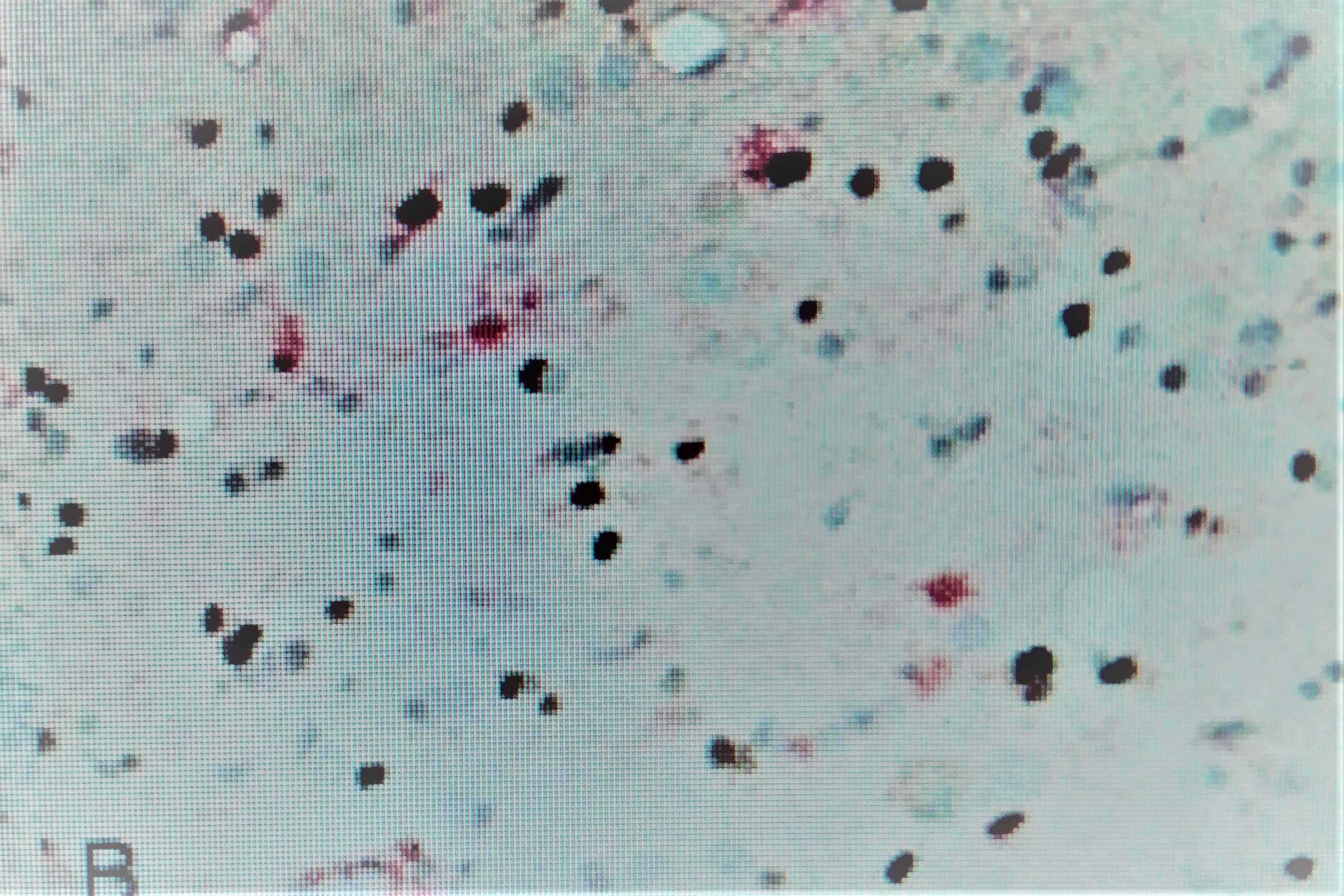 |
FH Tanusree (Verified Customer) (12-03-2019) | This antibody works good immuno-fluorescence and western blotting analysis using mouse brain tissues.
|
FH Ryan (Verified Customer) (02-14-2018) | NaCit antigen retrieval ph=6
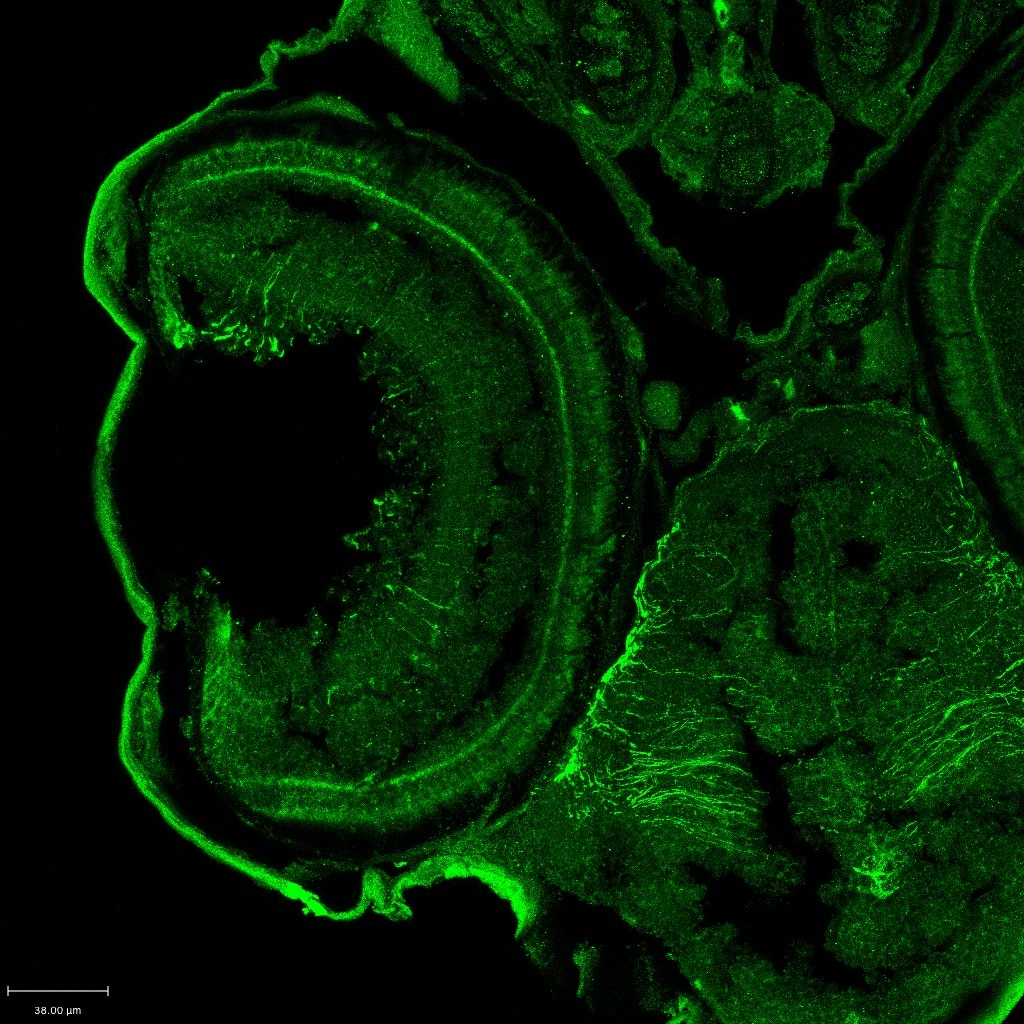 |
